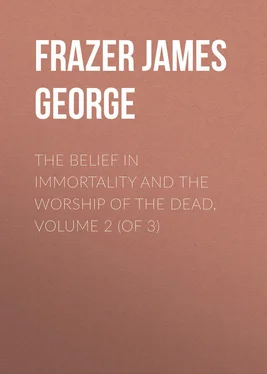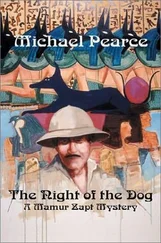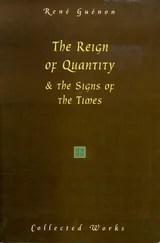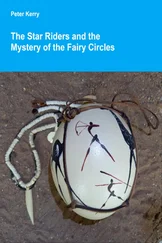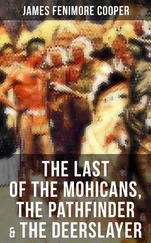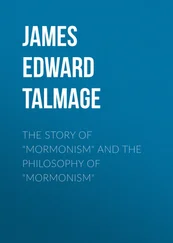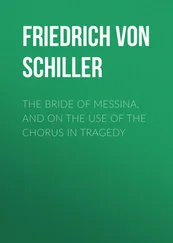James Frazer - The Belief in Immortality and the Worship of the Dead, Volume 2 (of 3)
Здесь есть возможность читать онлайн «James Frazer - The Belief in Immortality and the Worship of the Dead, Volume 2 (of 3)» — ознакомительный отрывок электронной книги совершенно бесплатно, а после прочтения отрывка купить полную версию. В некоторых случаях можно слушать аудио, скачать через торрент в формате fb2 и присутствует краткое содержание. Жанр: foreign_antique, foreign_prose, на английском языке. Описание произведения, (предисловие) а так же отзывы посетителей доступны на портале библиотеки ЛибКат.
- Название:The Belief in Immortality and the Worship of the Dead, Volume 2 (of 3)
- Автор:
- Жанр:
- Год:неизвестен
- ISBN:нет данных
- Рейтинг книги:3 / 5. Голосов: 1
-
Избранное:Добавить в избранное
- Отзывы:
-
Ваша оценка:
- 60
- 1
- 2
- 3
- 4
- 5
The Belief in Immortality and the Worship of the Dead, Volume 2 (of 3): краткое содержание, описание и аннотация
Предлагаем к чтению аннотацию, описание, краткое содержание или предисловие (зависит от того, что написал сам автор книги «The Belief in Immortality and the Worship of the Dead, Volume 2 (of 3)»). Если вы не нашли необходимую информацию о книге — напишите в комментариях, мы постараемся отыскать её.
The Belief in Immortality and the Worship of the Dead, Volume 2 (of 3) — читать онлайн ознакомительный отрывок
Ниже представлен текст книги, разбитый по страницам. Система сохранения места последней прочитанной страницы, позволяет с удобством читать онлайн бесплатно книгу «The Belief in Immortality and the Worship of the Dead, Volume 2 (of 3)», без необходимости каждый раз заново искать на чём Вы остановились. Поставьте закладку, и сможете в любой момент перейти на страницу, на которой закончили чтение.
Интервал:
Закладка:
On his second and more prolonged visit to the Tonga islands, Captain Cook expressed, with more confidence, his opinion that the fiatookas , as he calls them, were at once burial-grounds and places of worship. Thus he says: "Their morais or fiatookas (for they are called by both names, but mostly by the latter), are, as at Otaheite, and many other parts of the world, burying-grounds and places of worship; though some of them seemed to be only appropriated to the first purpose; but these were small, and, in every other respect, inferior to the others." 266 266 Captain Cook, Voyages , v. 424.
Again, in another passage he describes one of the more stately of these temple-tombs. He says: "Some of us, accompanied by a few of the king's attendants, and Omai as our interpreter, walked out to take a view of a fiatooka , or burying-place, which we had observed to be almost close by the house, and was much more extensive, and seemingly of more consequence, than any we had seen at the other islands. We were told, that it belonged to the king. It consisted of three pretty large houses, situated upon a rising ground, or rather just by the brink of it, with a small one, at some distance, all ranged longitudinally. The middle house of the three first, was by much the largest, and placed in a square, twenty-four paces by twenty-eight, raised about three feet. The other houses were placed on little mounts, raised artificially to the same height. The floors of these houses, as also the tops of the mounts round them, were covered with loose, fine pebbles, and the whole was inclosed by large flat stones of hard coral rock, properly hewn, placed on their edges; one of which stones measured twelve feet in length, two in breadth, and above one in thickness. One of the houses, contrary to what we had seen before, was open on one side; and within it were two rude, wooden busts of men; one near the entrance, and the other farther in. On inquiring of the natives, who had followed us to the ground, but durst not enter here, What these images were intended for? they made us as sensible as we could wish, that they were merely memorials of some chiefs who had been buried there, and not the representations of any deity. Such monuments, it should seem, are seldom raised; for these had probably been erected several ages ago. We were told, that the dead had been buried in each of these houses; but no marks of this appeared. In one of them, was the carved head of an Otaheite canoe, which had been driven ashore on their coast, and deposited here. At the foot of the rising ground was a large area, or grass-plot, with different trees planted about it; amongst which were several of those called etoa , very large. These, as they resemble the cypresses, had a fine effect in such a place. There was also a row of low palms near one of the houses, and behind it a ditch, in which lay a great number of old baskets." 267 267 Captain James Cook, Voyages , v. 342 sq.
Between the departure of Cook and the arrival of Mariner the first Protestant missionaries were fortunate enough to witness the burial of a king of Tonga, by name Moomōoe. Their description of it and of the royal tomb entirely bears out the observations and conclusions of Captain Cook. The fiatooka or burial-ground, they tell us, "is situated on a spot of ground about four acres. A mount rises with a gentle slope about seven feet, and is about one hundred and twenty yards in circumference at the base; upon the top stands a house neatly made, which is about thirty feet long, and half that in width. The roof is thatched, and the sides and ends left open. In the middle of this house is the grave, the sides, ends, and bottom of which are of coral stone, with a cover of the same: the floor of the house is of small stones. The etoa and other trees grow round the fiatooka ." 268 268 Captain James Wilson, Missionary Voyage to the Southern Pacific Ocean , pp. 240 sq.
Into this grave, or rather stone vault, the missionaries saw the king's body lowered. The stone which covered the vault was eight feet long, four feet broad, and one foot thick. This massive stone was first raised and held in suspense by means of two great ropes, the ends of which were wound round two strong piles driven into the ground at the end of the house. The ropes were held by about two hundred men, who, when the king's body had been deposited in the grave, slowly lowered the great stone and covered the vault. 269 269 Captain James Wilson, op. cit. p. 244.
Some years later Mariner witnessed the funeral of another king of Tonga, Finow the First; and he similarly describes how the tomb was a large stone vault, sunk about ten feet deep in the ground, the covering stone of which was hoisted by the main strength of a hundred and fifty or two hundred men pulling at the two ends of a rope; when the bodies of the king and his daughter had been laid side by side in the vault the massive stone was lowered by the men with a great shout. 270 270 W. Mariner, Tonga Islands , i. 387 sq.
The number of the men required to raise and lower these great stones gives us some idea of their weight.
Thus far we have been dealing only with the tombs of the civil kings of Tonga. But far more stately and massive are the tombs of the sacred kings or pontiffs, the Tooitongas, which still exist and still excite the curiosity and admiration of European observers. The Tongan name for these tombs is langi , which properly means "sky," also "a band of singers"; but there appears to be no connexion between these different meanings of the word. 271 271 W. Mariner, Tonga Islands , ii. 213 sq.
The tombs are situated in Tongataboo, not far from Mooa, the old capital of the island. They stand near the south-eastern shore of the lagoon, which, under the name of the Mooa Inlet, penetrates deeply into the northern side of Tongataboo. Beginning at the northern outskirts of the village of Labaha, they stretch inland for more than half a mile into the forest. 272 272 (Sir) Basil Thomson, "Notes upon the Antiquities of Tonga," Journal of the Anthropological Institute , xxxii. (1902) p. 86.
They are of various constructions and shapes. Some consist of a square enclosure, on the level of the ground, the boundary walls being formed of large stones; while at each corner of the square two high stones, rising above the wall, are placed upright at right angles to each other and in a line with their respective sides. 273 273 Captain James Wilson, Missionary Voyage to the Southern Pacific Ocean , pp. 283 sq.
But apparently the more usual and characteristic type of tomb has the form of a truncated pyramid or oblong platform raised in a series of steps or terraces, which are built of massive blocks of coral. The number of steps or terraces seems to vary from one to four according to the height of the monument. 274 274 The tomb described and illustrated by the first missionaries had four massive and lofty steps, each of them five and a half feet broad and four feet or three feet nine inches high. See Captain James Wilson, l. c. , with the plate facing p. 284. One such tomb, rising in four tiers, is ascribed traditionally to a female Tooitonga, whose name has been forgotten. See (Sir) Basil Thomson, "Notes upon the Antiquities of Tonga," Journal of the Anthropological Institute , xxxii. (1902) p. 88 n. 2 .
It is much to be regretted that no one has yet counted and mapped out these tombs and recorded the names of their royal or divine occupants, so far as they are remembered; but a trace of the religious awe which once invested this hallowed ground still avails to keep it inviolate. A proposal which Sir Basil Thomson made to clear away the forest and preserve the tombs was very coldly received; in the eyes of the natives, professing Christians as they are, it probably savoured of sacrilege. The ancient custom was to clear the ground about every new tomb, and after the interment to suffer the tropical undergrowth to swallow it up for ever. Nowadays no holy pontiffs are borne to their last resting-place in these hallowed shades; so the forest is never cleared, and nature is left free to run wild. In consequence the tombs are so overgrown and overshadowed that it is difficult to photograph them in the gloomy and tangled thicket. Great ifi trees 275 275 The Tahitian chestnut ( Inocarpus edulis ); see above, p. 74, note2 .
overhang them: banyan-trees have sprouted on the terraces and thrust their roots into every crevice, mantling the stones with a lacework of tendrils, which year by year rend huge blocks asunder, until the original form of the terrace is almost obliterated. Sir Basil Thomson followed the chain of tombs for about half a mile, but on each occasion his guides told him that there were other smaller tombs farther inland. The tombs increase in size and in importance as they near the shore of the lagoon, and to seven or eight of the larger ones the names of the occupants can be assigned; but the names of the sacred chiefs who sleep in the smaller tombs inland are quite forgotten. Some of them are mere enclosures of stones, not squared, but taken haphazard from the reef. 276 276 (Sir) Basil Thomson, Diversions of a Prime Minister (Edinburgh and London, 1894), pp. 379 sq. ; id. "Notes upon the Antiquities of Tonga," Journal of the Anthropological Institute , xxxii. (1902) p. 86. According to an earlier authority, the Tongans could name and point out the tombs of no less than thirty Tooitongas. See the letter of Mr. Philip Hervey, quoted in Proceedings of the Society of Antiquaries of London , Second Series, vol. ii. p. 77.
Интервал:
Закладка:
Похожие книги на «The Belief in Immortality and the Worship of the Dead, Volume 2 (of 3)»
Представляем Вашему вниманию похожие книги на «The Belief in Immortality and the Worship of the Dead, Volume 2 (of 3)» списком для выбора. Мы отобрали схожую по названию и смыслу литературу в надежде предоставить читателям больше вариантов отыскать новые, интересные, ещё непрочитанные произведения.
Обсуждение, отзывы о книге «The Belief in Immortality and the Worship of the Dead, Volume 2 (of 3)» и просто собственные мнения читателей. Оставьте ваши комментарии, напишите, что Вы думаете о произведении, его смысле или главных героях. Укажите что конкретно понравилось, а что нет, и почему Вы так считаете.
